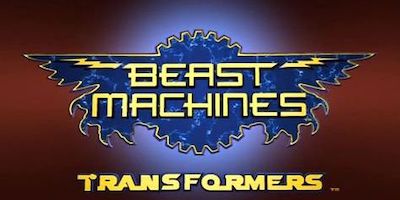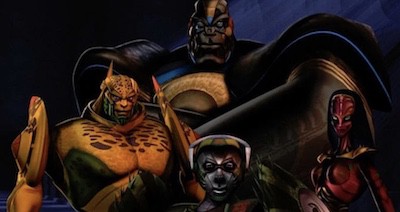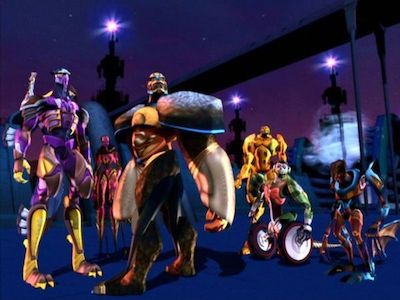Beast Machines was reimagined in the late 1990s, but before we get too far ahead, we need to take a step back and learn about Beast Wars in the mid-1990s.

The mid to late 1990s was a period of change for the long-running Transformers franchise. 1996 marked the introduction of Transformers: Beast Wars by Mainframe Studios, the CG animated studio that also made the show ReBoot.
Unlike past incarnations of the popular Hasbro franchise, this show had its heroic Transformers turn into animals rather than vehicles.
Transformers: Beast Wars
Rather than pitting Autobots against Decepticons, the show pits the Maximals against the Predacons. Despite this unusual premise and the rather primitive computer animation, this show proved to be a hit that managed a three-season run.

To this day, many franchise fans regard Beast Wars as a high point of Transformers in general. However, due to the franchise’s merchandise-driven nature, the time would soon come for it to get reinvented once again. Thus, Transformers Beast Machines arrived in 1999.
Transformers: Beast Machines
Despite being a new series, Beast Machines is actually a sequel series to Beast Wars carries over much of the returning cast from that series, and is once again produced by Mainframe Studios.
Unfortunately for fans at the time, this was where the familiarities ended. In terms of tone and plot, BM served as a radical departure from its predecessor.

Set in a dystopian version of Cybertron (the transformer’s home planet), Beast Machines is much darker than its predecessor, both figuratively and literally.
Beast Machines Malfunctions
The quirky sense of humor and colorful personalities that comprise Beast Wars is replaced by a story that takes itself much more seriously.
The protagonist of the series, the Maximals, in a very bleak and seemingly hopeless situation against a Megatron who has all but conquered Cybertron.
However, the most controversial was the new character designs, which were widely regarded as ugly and unpleasant to look at. The explanation for this change in style can partially be attributed to the change in writers.
The most iconic Transformers were highly criticized such as Beast Machines Optimus Prime.
Creators Mistakes
Led by Marty Eisenberg and Robert Skir, Beast Machines Transformers tells a much more serialized and ambitious story than its predecessor, as well as the majority of children’s animated shows at the time.
Reportedly, Eisenberg and Skir were instructed not to watch any episodes of Beast Wars and had little knowledge of the Transformers franchise as a whole, which created some obvious problems when making a sequel series.
This resulted in the abandonment of plot threads set up by Beast Wars, much to fans’ dismay to this day.
Despite this, the show is notable for telling a far more complex story than most children’s shows at the time. At only two seasons with 26 episodes total, Beast Machines focuses on the Maximals’ struggle to maintain a balance between the technological and the organic.
It’s essentially a classic story of nature vs. machines, but rather than condemning the latter as many stories tend to do, it instead suggests that the two must learn to coexist to achieve true harmony.
Beast Machines Legacy
Unfortunately, despite its ambitious nature, Beast Machines was ultimately deemed to be a failure.
Plans for another sequel series were scrapped following the disappointing response to Beast Machines, thus ending the “Beast Era” of Transformers.
To this day, fan response to the series is far more polarizing than its predecessor, though the show is not without its fans, thanks to the more mature and complex story it tells.
Read more about the Beast Machines series on Wikipedia and see Dragon Booster, another fun animated series, or Alessi JoJo.